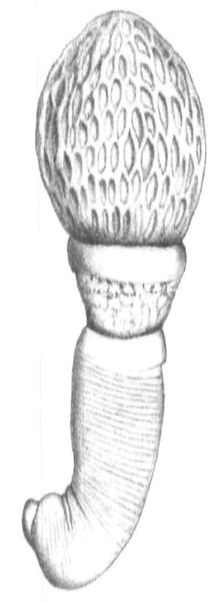Archiacanthocephala
| Archiacanthocephala | |
|---|---|
 | |
| Apororhynchus hemignathi | |
| Scientific classification | |
| Kingdom: | Animalia |
| Superphylum: | Platyzoa |
| Phylum: | Acanthocephala |
| Class: | Archiacanthocephala Meyer, 1931[1] |
| Orders | |
|
Apororhynchida | |

Scanning electron microscopy of proboscis of an archiacanthocephalan [2]
Archiacanthocephala is a class within the phylum of Acanthocephala.[3] They are microscopic parasitic worms that attach themselves to the intestinal wall of terrestrial vertebrates, including man. They are characterised by the body wall and the lemnisci (which are a bundle of sensory nerve fibers), which have nuclei that divide without spindle formation or the appearance of chromosomes or it has a few amoebae-like giant nuclei. Typically, there are eight separate cement glands in the male which is one of the few ways to distinguish the dorsal and ventrals sides of these organisms.
See also
- List of parasites (human)
References
- ↑ Meyer, A.: Neue Acanthocephalen aus dem Berliner Museum. Begründung eines neuen Acanthocephalensystems auf Grund einer Untersuchung der Berliner Sammlung. Zoologische Jahrbücher, Abteilung für Systematick, Ökologie und Geographie der Tiere 62, 1931, p. 65-68.
- ↑ Amin, O. A, Heckmann, R. A & Ha, N. V. (2014) Acanthocephalans from fishes and amphibians in Vietnam, with descriptions of five new species. Parasite, 21, 53 doi:10.1051/parasite/2014052PubMed

- ↑ Crompton, David William Thomasson; Nickol, Brent B.: Biology of the Acanthocephala, Cambridge University Press, 1985, p. 31.
| Wikispecies has information related to: Archiacanthocephala |